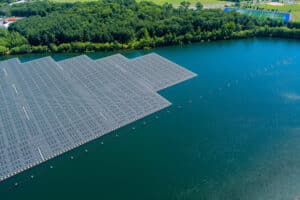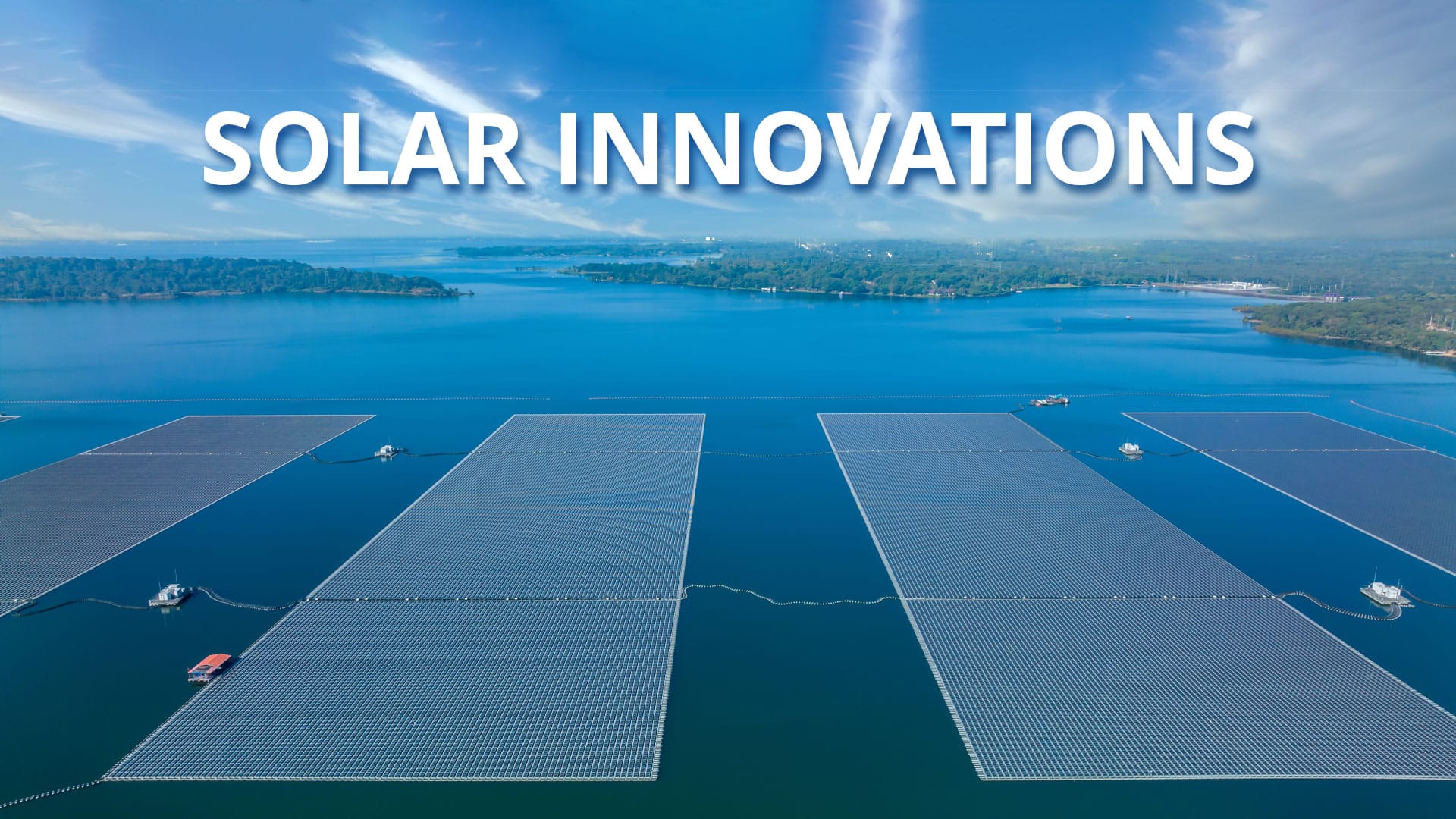5 Game-Changing Solar Innovations on the Horizon
As the world races toward a more sustainable future, the solar industry is experiencing an era of remarkable innovation. Today we’ll share with you 5 solar technologies that are in development and how these innovations work (or are intended to work). Though most of these technologies aren’t being distributed just yet, sharing these examples of creative solar innovations is meant to get you excited about our solar powered future and inspire you to become part of this clean energy revolution. So, let’s get into it:
1. Solar Hydroponics
 Imagine solar panels doubling as shade providers and energy generators, all while nurturing plant life. Welcome to the realm of solar hydroponics, where solar panels are creatively integrated into hydroponic farming systems.
Imagine solar panels doubling as shade providers and energy generators, all while nurturing plant life. Welcome to the realm of solar hydroponics, where solar panels are creatively integrated into hydroponic farming systems.
These solar canopies provide essential shade, creating an ideal environment for plant growth by reducing temperature stress. Simultaneously, they capture sunlight to generate clean energy all while optimizing space utilization. The energy produced by solar panels provides electricity for pumps and lights, which are used to control the flow of water and light to the plants. Solar hydroponics will soon hopefully become a mainstream way to cultivate food as it is sustainable, uses far less land for production, and embraces a dynamic approach to energy generation.
2. Floating Solar Farms
 Calm water bodies now have great potential to expand clean energy production thanks to innovative floating solar farms. These farms are essentially arrays of solar panels adrift on tranquil waters like lakes, reservoirs, and basins, allowing the solar panels to harness sunlight while gently floating on these surfaces.
Calm water bodies now have great potential to expand clean energy production thanks to innovative floating solar farms. These farms are essentially arrays of solar panels adrift on tranquil waters like lakes, reservoirs, and basins, allowing the solar panels to harness sunlight while gently floating on these surfaces.
Floatovoltaics, as these farms are coined, have lower installation costs than land farms and up to 10% greater power production because of the water’s cooling effect on the panels. Additionally, floating panels can actually help with water management because they reduce water evaporation and prevent algae blooms that can harm humans, fish, and plants. This lowers water treatment costs and ultimately benefits the body of water. By embracing this technology, we can tap into a synergy between renewable energy production and environmental preservation.
3. Solar Windows
 In densely populated urban areas, there is often a scarcity of open spaces. Nonetheless, the vertical surfaces, such as windows, offer an untapped potential. To harness this potential, various companies have explored the concept of solar windows.
In densely populated urban areas, there is often a scarcity of open spaces. Nonetheless, the vertical surfaces, such as windows, offer an untapped potential. To harness this potential, various companies have explored the concept of solar windows.
These windows fall under the category of building-integrated photovoltaics (BIPV), and most solar window designs do not necessitate the complete replacement of existing windows. Instead, they typically involve applying a solar-absorbing coating onto the surface of a window pane. While these products are still in the developmental phase and not yet available for purchase, they are at the forefront of advancing solar window technology due to their incredible potential to convert vast vertical landscapes into clean energy powerhouses.
4. Solar Roads
 The convergence of transportation and energy production has given rise to a remarkable idea: solar roads. Although there are notable challenges associated with this concept, it’s worth exploring its overarching goals and potential applications.
The convergence of transportation and energy production has given rise to a remarkable idea: solar roads. Although there are notable challenges associated with this concept, it’s worth exploring its overarching goals and potential applications.
One player in this field is Solar Roadways, which envisions roads that don’t accumulate snow and ice, lanes that illuminate, and stormwater that gets captured and channeled before polluting water bodies. However, Solar Roadways must navigate the intricacies of balancing durability, traction, and manufacturing efficiency. Critics argue that it might be simpler and more effective to install solar noise barriers alongside highways rather than altering the road surface itself.
Despite this, Solar Roadways has garnered substantial attention and financial support, including backing from the U.S. Department of Transportation. Their technology has undergone rigorous testing, yet, understandably, Solar Roadways wants to get their design right on other surfaces (such as bike trails and sidewalks) before they move onto more difficult ones like highways. If this innovative approach ever works, it would not only reduce our reliance on fossil fuels but also transform roads into dynamic energy sources, propelling us toward a greener future.
5. Solar Paint
 Imagine being able to harness solar power by simply applying paint to surfaces. Solar paint, also known as photovoltaic paint, contains photovoltaic compounds that capture sunlight and generate electricity. The applications are virtually limitless – from painting your home to coating outdoor structures with solar energy-generating layers. Currently, there are three main categories of solar paint under development: hydrogen paint, quantum dot solar cells, and perovskite paint.
Imagine being able to harness solar power by simply applying paint to surfaces. Solar paint, also known as photovoltaic paint, contains photovoltaic compounds that capture sunlight and generate electricity. The applications are virtually limitless – from painting your home to coating outdoor structures with solar energy-generating layers. Currently, there are three main categories of solar paint under development: hydrogen paint, quantum dot solar cells, and perovskite paint.
Hydrogen paint harnesses energy from water vapor. Special compounds within the paint absorb moisture from the atmosphere and then employ solar energy to break down this absorbed moisture into hydrogen and oxygen. The produced hydrogen can subsequently be converted into clean energy. This approach is purportedly environmentally friendly, cost-efficient, and adaptable to a variety of settings.
Another variety, quantum dot solar cells (also known as PV paint), involves the use of minuscule semiconductor particles, or quantum dots, that capture light and transform it into an electric current. This option boasts a lower cost per watt, and potentially, these quantum dots could offer up to an 11% boost in efficiency compared to conventional PV panels.
Lastly, there’s perovskite paint, often referred to as “spray-on solar cells.” Perovskite solar cells are capable of taking liquid form and can be applied to surfaces like vehicles and roofs, providing a versatile and adaptable solar energy solution.
Although these solar paint technologies are still in the developmental phase and have their own set of challenges to overcome, they offer promising avenues for making solar energy integration more accessible and efficient in the future.
Join the Revolution by Going Solar!
 Each of these five innovations is a testament to the versatility and virtually limitless potential of solar power. As innovators continue to find new ways to harness the power of our sun, it’s clear that solar technology is not only here to stay, but here to grow and continuously improve.
Each of these five innovations is a testament to the versatility and virtually limitless potential of solar power. As innovators continue to find new ways to harness the power of our sun, it’s clear that solar technology is not only here to stay, but here to grow and continuously improve.
At NATiVE, we take pride in spreading solar power access to Texas homes and businesses. As a full-service Engineering, Procurement, and Construction (EPC) company, we can take care of all your solar needs including the sale, installation, and service of a system. NATiVE has over 16 years of experience installing and servicing systems, and we even provide cashback energy performance guarantees. To learn more about going solar with us, receive a complimentary quote today and start working towards your energy independent and sustainable future!

































[…] intricate art of system design. Crafting the perfect design necessitates a deep understanding of solar technology, meticulous consideration of factors like panel orientation, tilt angles, shading analysis, and […]